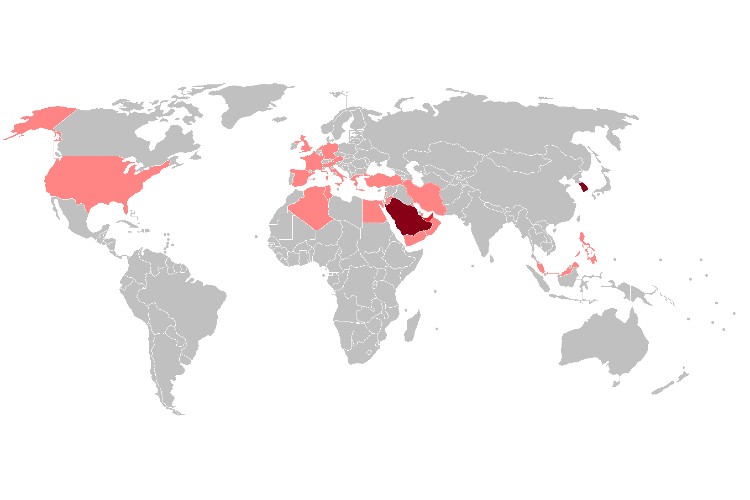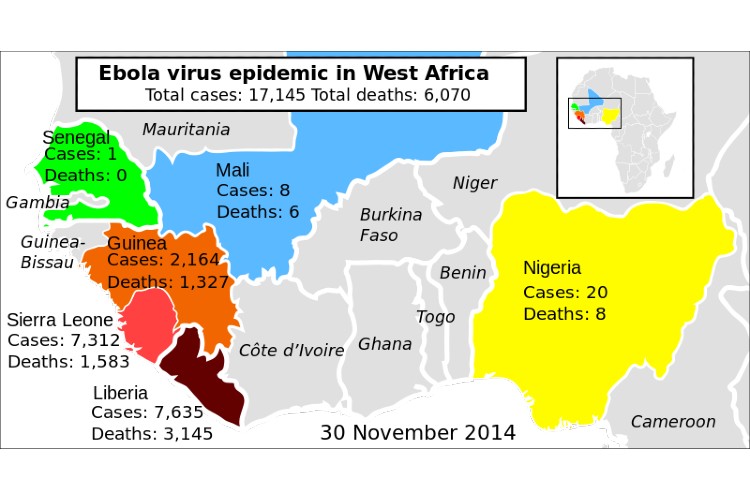Before we directly dive into the what and how of the biggest pandemics in human history, let’s look into what defines a PANDEMIC. A pandemic is the worldwide spread of disease. It is classified as an epidemic first, which is the outbreak of a disease across a particular region or regions.
The recent outbreak of COVID-19 began as an epidemic in China. It then made its way around the world in a matter of months, thus turning into a pandemic. The novel coronavirus or COVID-19 was declared as such by the World Health Organization on March 12, 2020.
Through the course of history, there have been many outbreaks of disease that have ravaged humanity. But the 20th century was specifically the era of modern virology and therefore, it’s important to understand how each of them differed from the others in epidemiology, and disease severity. Historically, pandemics have occurred over several centuries. But here let’s take a look at more recent times and see some of the worst pandemics that have haunted humans since the 20th century.
Take a trip back in time to check out the modern history of pandemics from the 20th century onwards.
Also Read: Use these 6 legitimate go-to resources for COVID-19 information
Here Are 8 Of The Biggest Pandemics In Human History Since The 20th Century
Spanish Flu (1918-1920)

Considered one of the deadliest pandemics in human history, the Spanish flu was caused by the Influenza A virus H1N1. Despite its name, the virus did not originate in Spain. However, the country was the first to report an outbreak. Being the only neutral nation during the first world war, it did not enforce strict censorship of its press. This enabled immediate, on-ground reportage of the outbreak.
The flu killed around 50 million people across the world—that’s an estimated 1% to 3% mortality rate. The flu’s spread and lethality were said to have been boosted by the cramped conditions of soldiers and poor war-time nutrition that many people were experiencing during World War I.
Asian Influenza (1957)

This flu pandemic began in East Asia in 1957. According to the Centers for Disease Control and Prevention (CDC), it was caused by the Influenza A subtype H2N2 virus. The virus claimed more than 1 million lives worldwide with 116,000 of them in the United States alone. In its two year spree, the flu made its way from China to Singapore, then Hong Kong and lastly, to the United States.
Hong Kong Influenza (1968)
It originated in Southeast Asia and was caused by Influenza A subtype H3N2 virus, a genetic offshoot of the H2N2 subtype. Also referred to as category 2 flu pandemic, the Hong Kong Flu killed almost 1-2 million people worldwide, which is about 0.03% of the world’s population, according to the CDC.
While the mortality rate was comparatively low, it still resulted in deaths of 500,000 residents of Hong Kong (approximately 15% of its population). The first case was reported in July in Hong Kong. From there, it took just 17 days for the virus to spread to Singapore and Vietnam. Within three months, this influenza spread to the Philippines, India, Australia, Europe, and the United States.
Human Immuno-Deficiency Syndrome, HIV (1981)

Ever since it was first discovered in 1918, HIV (the virus that causes AIDS) has claimed an estimated 35 million lives, while 75 million have been infected. The virus possibly developed from a virus that existed in chimpanzees, that was transferred to humans in West Africa in the 1920s. It was first detected in the Democratic Republic of the Congo in 1976. Currently, about 64% of the estimated 40 million people living with human immunodeficiency virus (HIV) live in sub-Saharan Africa.
For decades, the disease had no known cure. But as awareness has grown, new treatments have made HIV a far more manageable chronic health condition now. What’s encouraging is that between 2005 and 2012, the annual deaths from HIV/AIDS dropped from 2.2 million to 1.6 million globally. And what’s even more encouraging is that two people have even been cured of HIV as of early 2020.
SARS (2002-2003)

Severe Acute Respiratory Syndrome (SARS-CoV) is a highly contagious respiratory illness that is caused by the SARS-CoV virus. The outbreak was first identified in the Guangdong province of southern China in 2002. It then spread to Toronto, Hong Kong Special Administrative Region, Chinese Taipei, Singapore, and Hanoi, where early cases occurred through a series of human-to-human transmission.
SARS is characterised by symptoms like persistent fever, headache and bodily discomfort. This is followed by a dry cough that may progress to difficulty in breathing. In total, the outbreak infected over 8,000 people from 29 different countries and killed at least 774 worldwide.
Swine Flu, H1N1 Flu, (2009)

Known to be the first major influenza outbreak in the 21st century, Swine flu was caused by a new strain of the H1N1 virus that spread rapidly via an unusually high degree of viral contagiousness. The virus was first detected in the USA in April 2009 before spreading quickly across the US and the world.
According to the CDC, the virus has infected as many as 1.4 billion people across the globe and killed between 151,700 and 575,400 people in one year. As reported by the CDC, this 2009-2010 flu pandemic primarily affected children and middle-aged adults. 80% of the deaths were among people younger than 65. Older adults seemed to have built enough immunity to the group of viruses that H1N1 belonged to, so they weren’t affected as much.
While the mortality rate during the pandemic was far less, at an estimated 0.01% to 0.08% (according to an analysis published in the journal The Lancet), the H1N1 virus continues to circulate as a seasonal flu virus, still causing illness, hospitalization, and deaths worldwide every year.
MERS (2012)

Middle East Respiratory Syndrome or MERS is a viral respiratory illness. It is caused by a strain of coronavirus MERS-CoV which attacks the respiratory system. It was first identified in Saudi Arabia in 2012. Since then, it has spread to 27 countries across the world, including the United States.
According to WHO, there have been a total of 2,494 laboratory-confirmed cases of Middle East respiratory syndrome (MERS) by the end of November 2019. These cases include 858 associated deaths (case-fatality rate: 34.4%) that were reported globally. The majority of these cases were reported in Saudi Arabia.
Ebola Virus Disease, EBV, (2014)

Caused by the Zaire Ebola virus EBOV, Ebola Virus Disease is said to have originated from wild animals (fruit bats, porcupines, and non-human primates). This virus was first discovered in 1976 in what is now the Democratic Republic of Congo. Since then, the majority of cases and EBV outbreaks have occurred in Africa. The unprecedented magnitude of its spread was seen between 2014-2016. During this period, it ravaged West Africa and resulted in 28,600 reported cases and 11,325 deaths.
Formerly known as Ebola haemorrhagic fever, EVD first spread through Guinea in December 2013. It then spread to Sierra Leone and Liberia. The bulk of cases and deaths occurred in these three countries. A smaller number of cases occurred in Nigeria, Mali, Senegal, the United States, and Europe, the CDC reported.
Also Read: Which Countries Are On Lockdown Due To The Coronavirus Outbreak?
So, What Does History Teach Us?
The dark cloud of COVID-19 is still looming over us. But we must remind ourselves that health workers worldwide are racing to curb its spread. While talking about past pandemics, we take a look at our past mistakes and try to learn from them. Studying the biggest pandemics in human history will help us acquire knowledge that can be applied to other areas of disease such as surveillance or learning to respond to other health threats. For example, the SARS pandemic in 2002-2003 saw the application of different control measures like quarantine, travel restrictions, and fever checks at airports. This has helped the health community prepare for emergencies like the one we are facing right now.
Help yourself with more knowledge here and let us know in the comments below if we have missed something that needs to be added to our list of biggest pandemics in human history!

